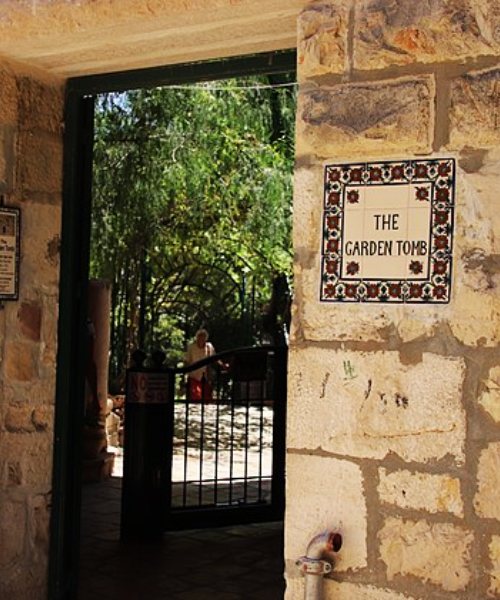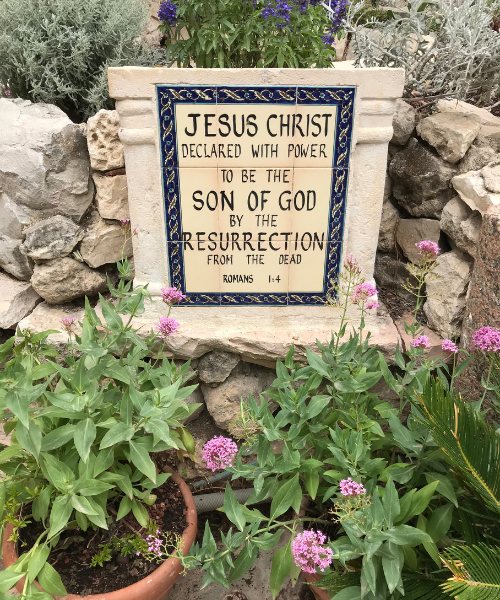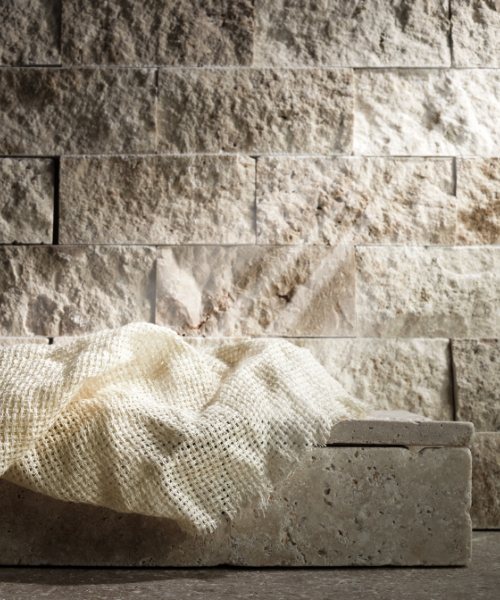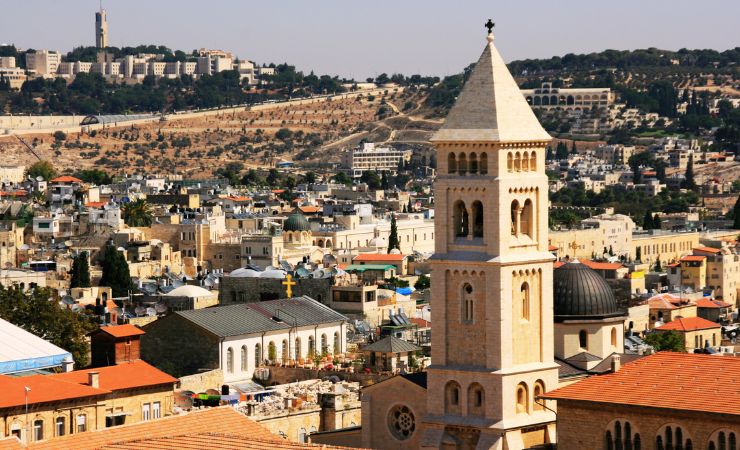The Garden Tomb and its Biblical Echoes
Originally published: June 2023 | Last updated: May 2025
Overview
The Garden Tomb is considered by some denominations as the place where Jesus was crucified and buried. It is owned and administered by The Garden Tomb (Jerusalem) Association, a charitable trust based in the United Kingdom.

Location of the Garden Tomb
Nestled amidst the timeless structures of East Jerusalem, the Garden Tomb beckons from its peaceful corner near the bustling Damascus Gate, one of the primary gateways into the city’s historic heart.
Biblical Context
The Garden Tomb weaves a compelling narrative that resonates with biblical descriptions. Hebrews (13:12) portrays Jesus’ crucifixion outside the city gate, aligning with the tomb’s location outside Jerusalem’s walls. Furthermore, the Gospel of John (19:41-42) tells of a garden near the crucifixion site. This mirrors the setting of the Garden Tomb, adding another layer of authenticity to its biblical significance. The verse narrates,
The Garden Tomb's Historical Lens
The Garden Tomb wasn’t always recognized as a sacred site. Its journey into the annals of religious history began in the 19th century. The tomb, an ancient sepulcher hewn out of rock, was discovered in 1867. General Charles Gordon, a British Army officer, visited the site in 1883 and was intrigued by the tomb’s proximity to a rocky escarpment resembling a skull. He connected this with the biblical description of Golgotha, ‘The Place of the Skull’, leading to the conjecture that this could indeed be the crucifixion and resurrection site of Jesus Christ.
Over time, the Garden Tomb garnered recognition and became a significant pilgrimage site, especially for Protestants. This location provided an alternative to the Church of the Holy Sepulchre, located at the end of the Via Doloroasa, that is traditionally recognized by Catholic and Orthodox Christians as the site for Jesus’ crucifixion and resurrection.



Archaeological Findings
- The Tomb (Sepulcher): The burial cave was discovered around 1867 and consists of two chambers: an outer chamber with a single stone bench and an inner chamber featuring a triple-bench design along three walls. The benches were originally about a meter wide and more than two meters long. The tomb’s original entrance was small and low. Later, Byzantine Christians modified the benches, carving them into casket-like troughs.
- The “Skull Hill” (Golgotha): Adjacent to the Garden Tomb grounds is a rocky escarpment that resembles a human skull, which General Charles Gordon famously associated with the biblical Golgotha, the “Place of the Skull.” Its position outside the ancient city walls and along a major road leading north would have made it a practical and visible place for Roman executions. Ancient sources, including Eusebius, noted that Golgotha was located “north of Mount Zion,” a description that matches the geography of Skull Hill.
- The Winepress: South of the tomb’s entrance lies a small, well-preserved winepress. Some suggest this points to the presence of a vineyard in ancient times, reinforcing the Gospel’s reference to a garden setting. Excavated in 1924 and thought to predate Christianity, the winepress supports the idea of agricultural activity at the site.
- The Large Cistern: A massive underground cistern near the tomb could hold between 200,000 and 250,000 gallons of water. Some have cited it as evidence of a garden existing here during the first century. However, archaeological findings show that the cistern was cut and plastered between A.D. 1100 and 1187, during the Crusader period.
- The Rock-Cut Channel (“Rolling Stone Track”): Beneath the tomb entrance is a rock-cut channel that many have interpreted as the track for a large rolling stone meant to seal the tomb. However, archaeological analysis reveals that the channel slopes away from the entrance and has a slanted edge, making it unsuitable for a rolling stone. Instead, comparisons with other Crusader sites suggest that this feature was part of a water trough, built as part of a stable complex to help channel water for animals.
Additional Information
Detailed Timeline
- Third or Second Centuries BC (Hellenistic Era): Burial niches at the site of the later Church of the Holy Sepulchre are likely carved. Riccardo Lufrani suggests dating the Garden Tomb to this period as well.
- Late First Century BC: Single burials attested in the Herodian center of Jericho. Single loculus systems in use.
- Between 63 BC and 4 BC (During the reign of the last Hasmonean monarchs or Herod the Great): The “second wall” of Jerusalem is built, annexing new neighborhoods and shifting the city limits. The site of the Holy Sepulchre, being fifty meters west of this new wall, becomes an area where new tombs would not have been permitted according to Jewish custom.
- 50 BC to AD 70: The use of ossuaries among Jews is traced to this period.
- Circa AD 30: Jesus is crucified outside the city walls near a garden. His body is taken down, wrapped in linen with spices, and placed in a new, unused tomb owned by Joseph of Arimathea in a garden. The tomb is sealed with a large stone. This tomb is likely a single-chamber, triple-bench tomb with a low doorway and a square, plug-like blocking stone.
- After AD 30: The tomb of Jesus is found empty, a central tenet of Christianity.
- Late First Century AD: The Romans destroy Jerusalem.
- 300s: The site of the Church of the Holy Sepulchre is identified by the Romans as the burial site of Jesus, based on local traditions.
- 306-337 (Reign of Constantine): The site of the Church of the Holy Sepulchre was a temple to Venus prior to this time.
- Circa AD 1100-1187 (Crusader Period): The bell-shaped cistern near the Garden Tomb is cut out and plastered during this time. Crusader crosses are carved into its interior.
- 1639: Quaresmius notes “western heretics” doubting the traditional site of Christ’s tomb.
- 1741: German pilgrim Jonas Korte publishes a book arguing against the traditional location of Calvary, stating it is now in the middle of the town.
- 1840s-1880s: Christian scholars propose Skull Hill, near the Damascus Gate, as the location of Golgotha. This includes Otto Thenius (1842), Fisher Howe (1853, 1871), H. B. Tristram, and Claude R. Conder.
- 1867: The Garden Tomb, an ancient rock-cut tomb, is discovered near Skull Hill in Jerusalem.
- 1883: General Charles Gordon visits the Garden Tomb area and is struck by the skull-like appearance of the rocky escarpment (Skull Hill). He connects this to the biblical description of Golgotha.
- Latter Half of the 19th Century: Tombs are found near “Gordon’s Golgotha.” Gordon concludes one of these must be the tomb of Jesus.
- 1885: The Garden Tomb Society is formed and purchases the Garden Tomb and surrounding land.
- 1894: Arthur William Crawley Boevey produces an introduction and guidebook to the Garden Tomb for the Committee of the Garden Tomb Maintenance Fund.
- Early 1920s: Mabel Bent revises and enlarges the Garden Tomb guidebook.
- 1986: Israeli archaeologist Gabriel Barkay publishes an article arguing the Garden Tomb dates to the Iron Age II (8th-7th centuries BCE) based on its features. Dan Bahat concludes the Church of the Holy Sepulchre is a plausible location for Jesus’ crucifixion and burial as it was outside the city walls in his day.
- 1999: Peter Walker publishes “The Weekend that Changed the World: The Mystery of Jerusalem’s Empty Tomb.” Israeli archaeologist Amos Kloner suggests Jesus’ tomb was sealed with a square blocking stone, not a rolling stone disc, based on the prevalence of such stones in First Century tombs.
- 2001: Archaeological research on the Garden Tomb site is essentially complete.
Nearby Sites
The Church of the Holy Sepulchre: An equally revered alternative site for Jesus’ crucifixion and resurrection, located just a short distance from the Garden Tomb inside of Jerusalem’s Old City Walls.
Damascus Gate: Damascus Gate is one of the primary gateways into the historic heart of East Jerusalem. It is close to Herod’s Gate too.
Rockefeller Archaeological Museum: The museum showcases a vast collection of antiquities discovered mainly during the British Mandate.
- The Via Dolorosa: A path within the Old City, believed to be the route that Jesus trod towards his crucifixion. Notable sites along the road is the Church of the Flagellation and the Church of Condemnation.



